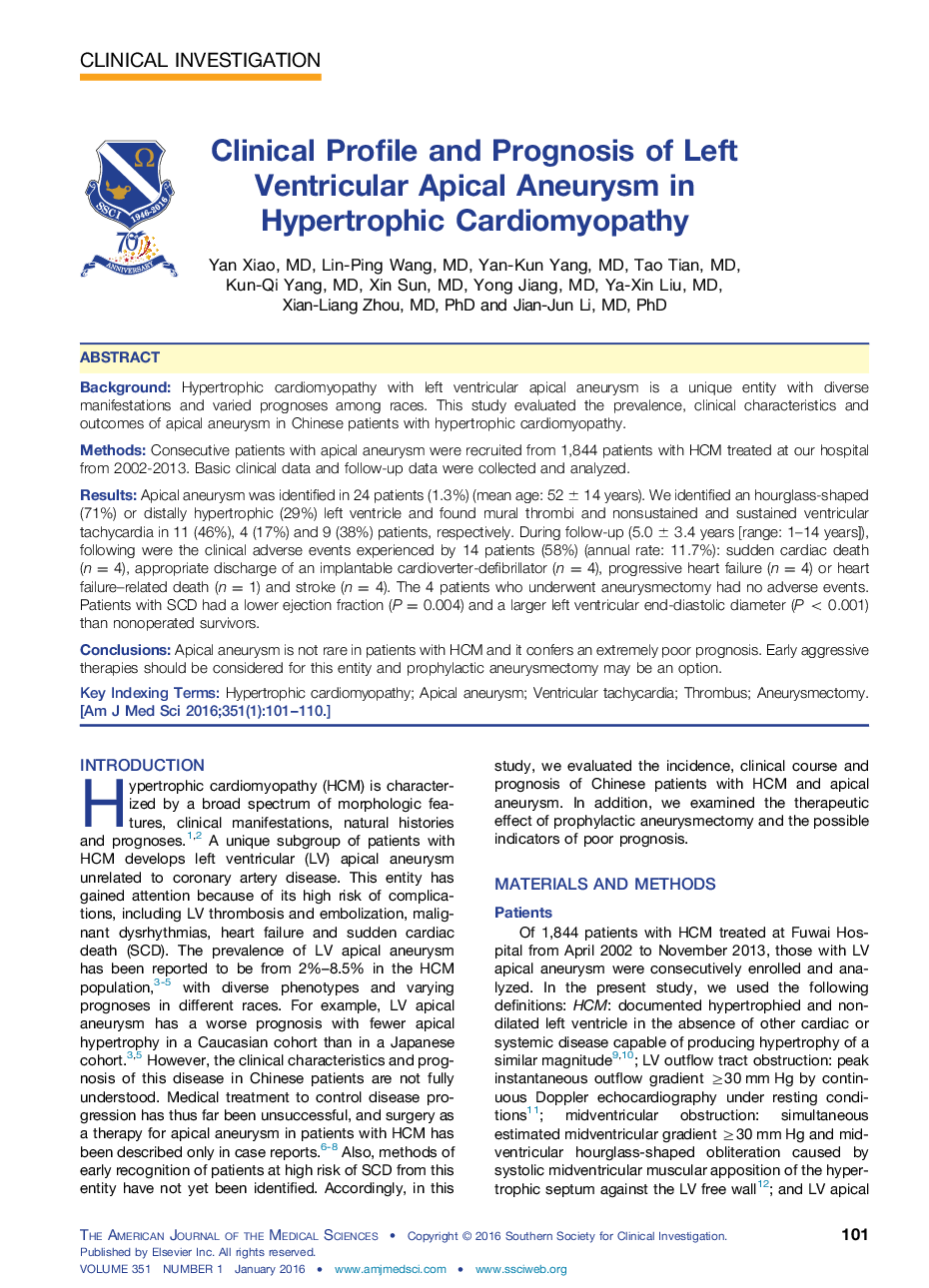| Article ID | Journal | Published Year | Pages | File Type |
|---|---|---|---|---|
| 2863282 | The American Journal of the Medical Sciences | 2016 | 10 Pages |
BackgroundHypertrophic cardiomyopathy with left ventricular apical aneurysm is a unique entity with diverse manifestations and varied prognoses among races. This study evaluated the prevalence, clinical characteristics and outcomes of apical aneurysm in Chinese patients with hypertrophic cardiomyopathy.MethodsConsecutive patients with apical aneurysm were recruited from 1,844 patients with HCM treated at our hospital from 2002-2013. Basic clinical data and follow-up data were collected and analyzed.ResultsApical aneurysm was identified in 24 patients (1.3%) (mean age: 52 ± 14 years). We identified an hourglass-shaped (71%) or distally hypertrophic (29%) left ventricle and found mural thrombi and nonsustained and sustained ventricular tachycardia in 11 (46%), 4 (17%) and 9 (38%) patients, respectively. During follow-up (5.0 ± 3.4 years [range: 1–14 years]), following were the clinical adverse events experienced by 14 patients (58%) (annual rate: 11.7%): sudden cardiac death (n = 4), appropriate discharge of an implantable cardioverter-defibrillator (n = 4), progressive heart failure (n = 4) or heart failure–related death (n = 1) and stroke (n = 4). The 4 patients who underwent aneurysmectomy had no adverse events. Patients with SCD had a lower ejection fraction (P = 0.004) and a larger left ventricular end-diastolic diameter (P < 0.001) than nonoperated survivors.ConclusionsApical aneurysm is not rare in patients with HCM and it confers an extremely poor prognosis. Early aggressive therapies should be considered for this entity and prophylactic aneurysmectomy may be an option.
